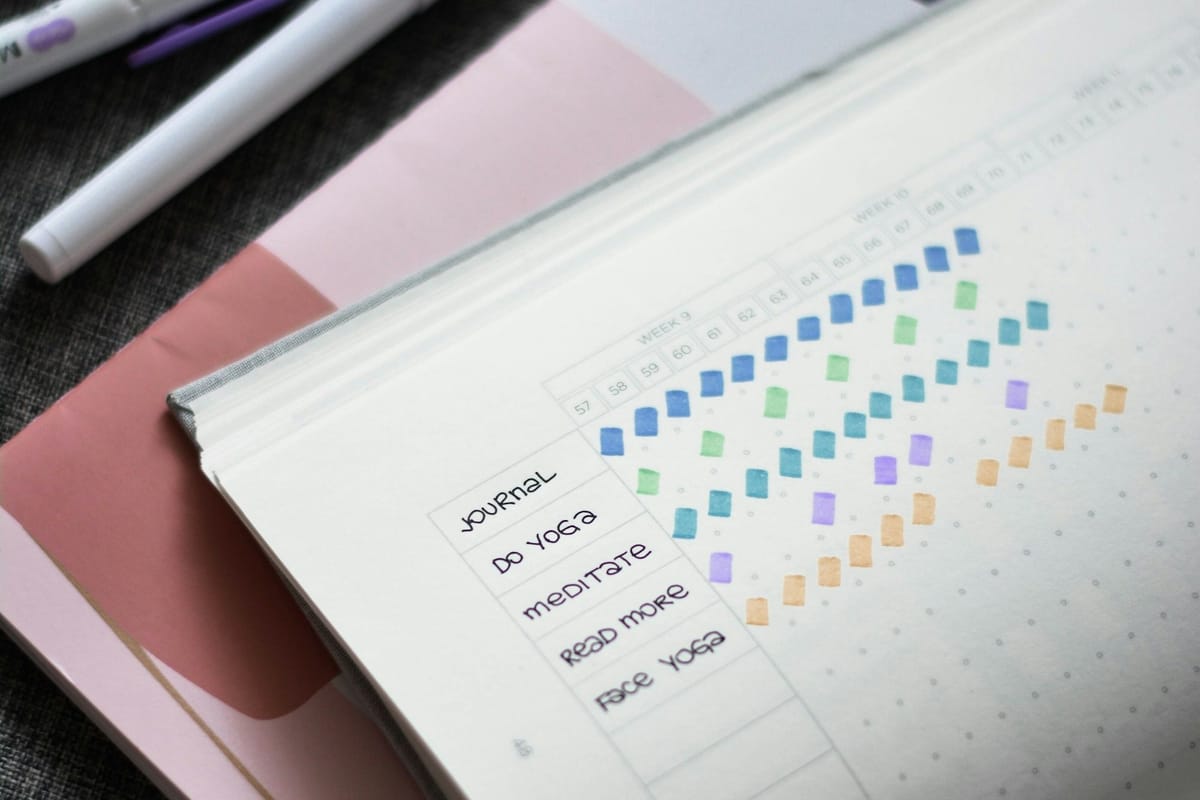I’ve never really been one for setting New Year’s resolutions. They always felt like overly lofty goals that were too big of a lift for me to actually feel motivated to stick with them. For instance, last year, I made a “commitment” to learn Hindi by learning 52 phrases in 52 weeks. It felt doable, but what I didn’t do was set my intention for why I wanted to learn Hindi. Bigger than that, I didn’t have a plan or a system in place to actually hold me accountable.
Fast forward to December 2021. I’m sitting on the couch next to my partner, and we’re talking about all the things we want to do in 2022. Eat healthy, exercise more, read more, and for me, once again try my hand at learning a new language. Being unilingual, I’ve always wanted to connect with my own background - and my partner’s. Learning a new language was always something I’ve wanted to do, but have always been scared to actually start doing.
So, unlike 2021, I decided that I needed a plan. For me, I wanted to read more, learn a new language, and exercise - i.e. going for a daily walk - more regularly. I decided that doing each of those daily would keep me motivated. And that’s when I remembered something I had once read about Jerry Seinfeld.
He once said that when he was just starting out as a comedian, he discovered that simply having a plan wasn’t enough. In order for him to master his craft, he needed a system to hold himself accountable, and the easiest way to do that was to visualize it.
The idea is that you get yourself a cheap calendar and a red pen. Everyday that you complete your daily task or challenge, you cross it off with a satisfying swipe of that red pen. “After a few days you'll have a chain. Just keep at it and the chain will grow longer every day. You'll like seeing that chain, especially when you get a few weeks under your belt. Your only job next is to not break the chain.”
“DON’T BREAK THE CHAIN”
Being someone who wanted to be able to do this on the go, especially when I’m traveling or camping in the summer, I realized that a habit tracking app would probably be the best option. I tried a few out over two weeks before settling on one that just worked without any of the unnecessary frills often found in most habit tracking apps.
I started the year out with those three simple habits - read more, exercise more, and learn a new language. At first, the habit tracker worked really well, and it kept me motivated to keep the streak going. But after a few weeks, I started to feel differently about this system. I soon realized that I had forgotten to take one final thing into account - flexibility.
See, what I had inevitably started doing was trying to cram all three into the evening hours after work, when I was already tired from a full day of meetings. By not spreading out the habits I wanted to form, they started to pile up and quickly felt like more of a chore that I had to do than something I wanted to be doing. Invariably, I ended up doing those challenges out of a sense of obligation, and felt like I wasn’t making those incremental, 1% improvements that I had wanted to see. I had the intention, the plan, and the system, but not the flexibility, to support those goals.
This isn’t entirely unfounded either. A study of teens using the Streaks feature in Snapchat found that while it did maintain Snapchat’s DAU (daily active users), the content being shared no longer mattered. What mattered most was the streak. It’s like that scene from Friends, where Ross and Joey are throwing this ball around and they begin to see how long they can go before they drop it. What initially began as a bonding moment for them quickly transformed into something else - it became about the metric, not the intention.
So, after two months, at the end of February, I decided to forgo the app entirely, and instead of daily challenges, I decided to focus instead on the overall outcome. In essence, I’m sort of back to where I started. I now spend my evenings after work going to the gym, followed by 15 minutes of Duolingo. And just before I go to bed, I set my phone aside and pick up my Kindle, reading until I get sleepy. This routine that I’ve settled into has been working for me, and I no longer feel pressured to maintain that daily streak just for the sake of maintaining it.
And that’s where flexibility comes in.
One of the key takeaways that I’ve learned from this short experiment with habit tracking was that I tried to make this process “perfect”. Maintaining a streak isn’t the only foundation to building a habit. It’s certainly important, but equally so, it’s knowing that you can take a day off in-between should you need it.
It’s knowing when to adjust your habits. Perhaps you started this process, and doing something daily worked for you, but not several weeks in, it’s started to burn you out. Ultimately, that’s what happened to me. I was being held back by my own compulsion to maintain this streak that I stopped actually taking things in and was just going through the motions.
Building a habit shouldn’t feel forced, and it shouldn’t cause undue stress. It should be challenging enough to push you out of your comfort zone, while also providing you enough satisfaction and motivation to continue working towards that goal. It doesn’t matter if you haven’t missed a single day doing whatever it is you want to do, it doesn’t necessarily mean that you used that time wisely. Perhaps you need to do something else in the time that you spent exercising, or learning a new language. For me that was revelatory, knowing that I could take a break and miss a day, and that wouldn’t necessarily impede my sense of progress.
And sometimes, that’s exactly what you need to build a strong habit.



Member discussion: